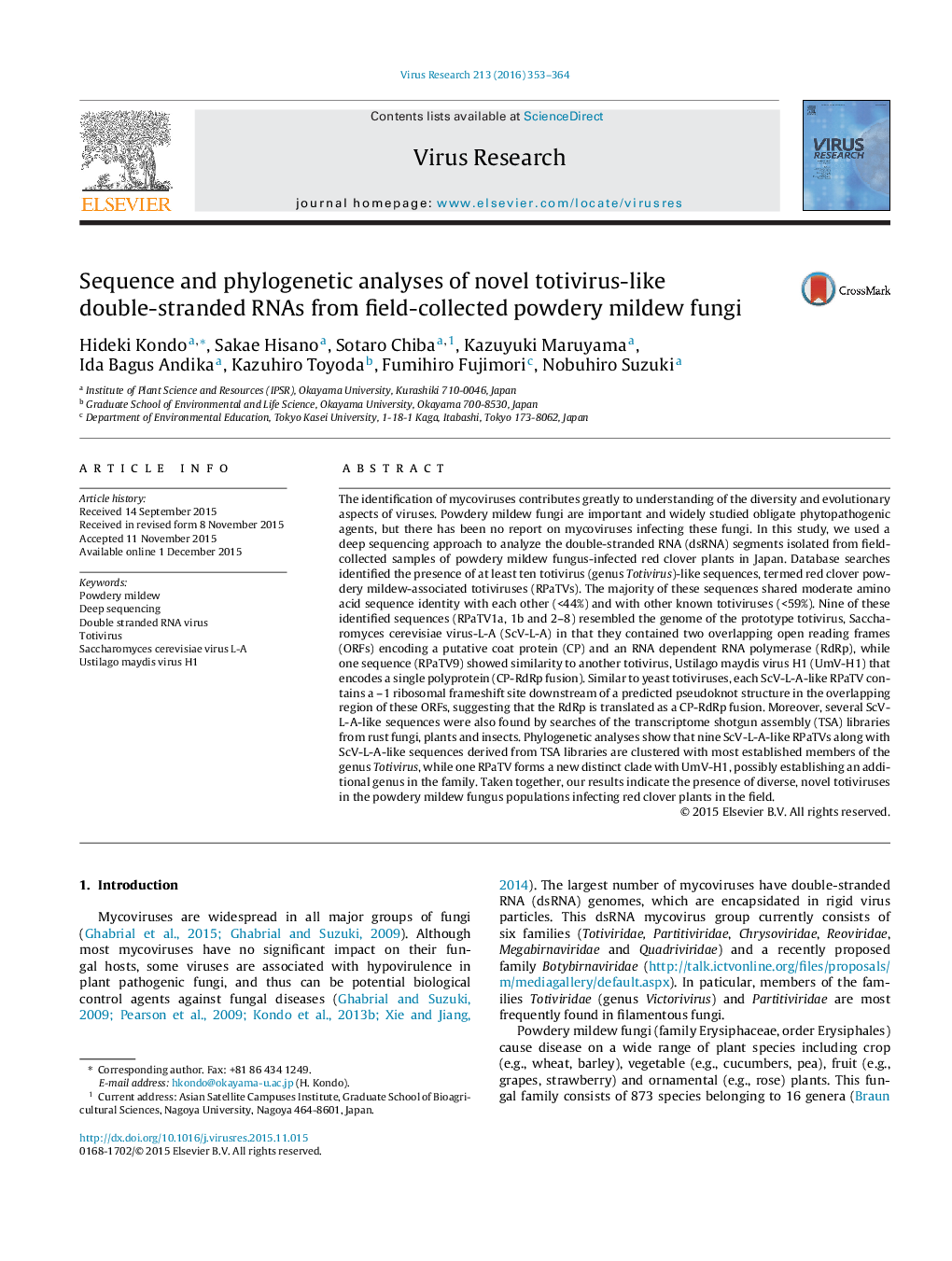| Article ID | Journal | Published Year | Pages | File Type |
|---|---|---|---|---|
| 3427929 | Virus Research | 2016 | 12 Pages |
•The first report of mycovirus infection of the powdery mildew fungi.•Multiple dsRNA were detected from field-collected samples of powdery mildew fungi.•Deep sequencing of dsRNA revealed the presence of nine yeast and one smut fungal totivirus-like viruses.•Similar totvirus-like sequences are found in transcriptome shotgun assembly (TSA) libraries of the fungi, plants and insects.•These putative totiviruses and totvirus-like TSA sequences are phylogenetically clustered with members of the genus Totivirus, but not of the genus Victorivirus.
The identification of mycoviruses contributes greatly to understanding of the diversity and evolutionary aspects of viruses. Powdery mildew fungi are important and widely studied obligate phytopathogenic agents, but there has been no report on mycoviruses infecting these fungi. In this study, we used a deep sequencing approach to analyze the double-stranded RNA (dsRNA) segments isolated from field-collected samples of powdery mildew fungus-infected red clover plants in Japan. Database searches identified the presence of at least ten totivirus (genus Totivirus)-like sequences, termed red clover powdery mildew-associated totiviruses (RPaTVs). The majority of these sequences shared moderate amino acid sequence identity with each other (<44%) and with other known totiviruses (<59%). Nine of these identified sequences (RPaTV1a, 1b and 2–8) resembled the genome of the prototype totivirus, Saccharomyces cerevisiae virus-L-A (ScV-L-A) in that they contained two overlapping open reading frames (ORFs) encoding a putative coat protein (CP) and an RNA dependent RNA polymerase (RdRp), while one sequence (RPaTV9) showed similarity to another totivirus, Ustilago maydis virus H1 (UmV-H1) that encodes a single polyprotein (CP-RdRp fusion). Similar to yeast totiviruses, each ScV-L-A-like RPaTV contains a –1 ribosomal frameshift site downstream of a predicted pseudoknot structure in the overlapping region of these ORFs, suggesting that the RdRp is translated as a CP-RdRp fusion. Moreover, several ScV-L-A-like sequences were also found by searches of the transcriptome shotgun assembly (TSA) libraries from rust fungi, plants and insects. Phylogenetic analyses show that nine ScV-L-A-like RPaTVs along with ScV-L-A-like sequences derived from TSA libraries are clustered with most established members of the genus Totivirus, while one RPaTV forms a new distinct clade with UmV-H1, possibly establishing an additional genus in the family. Taken together, our results indicate the presence of diverse, novel totiviruses in the powdery mildew fungus populations infecting red clover plants in the field.
